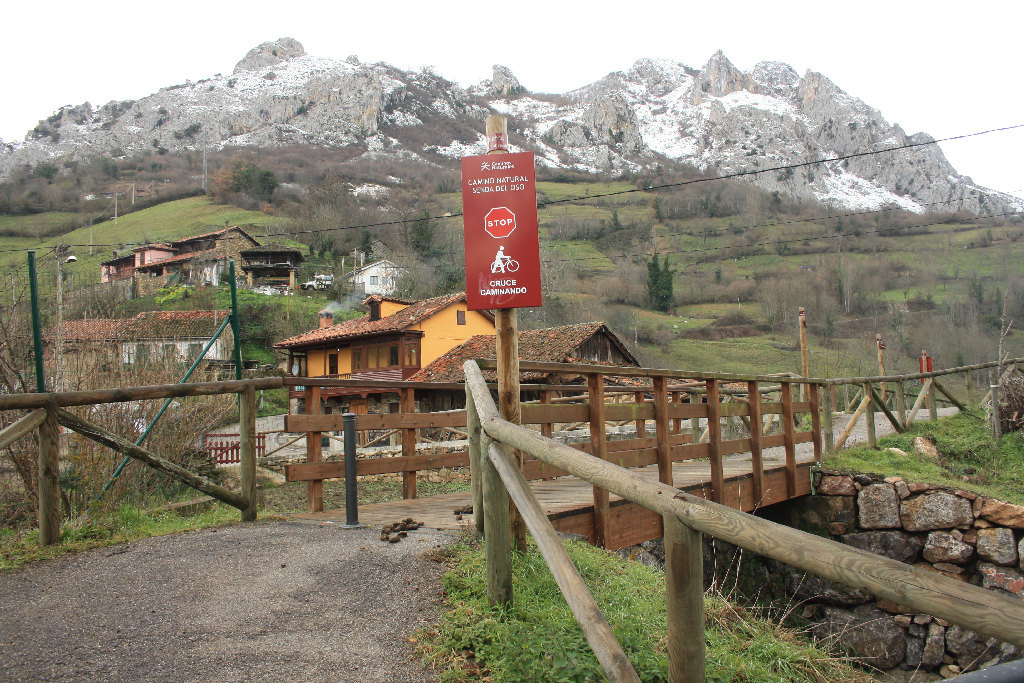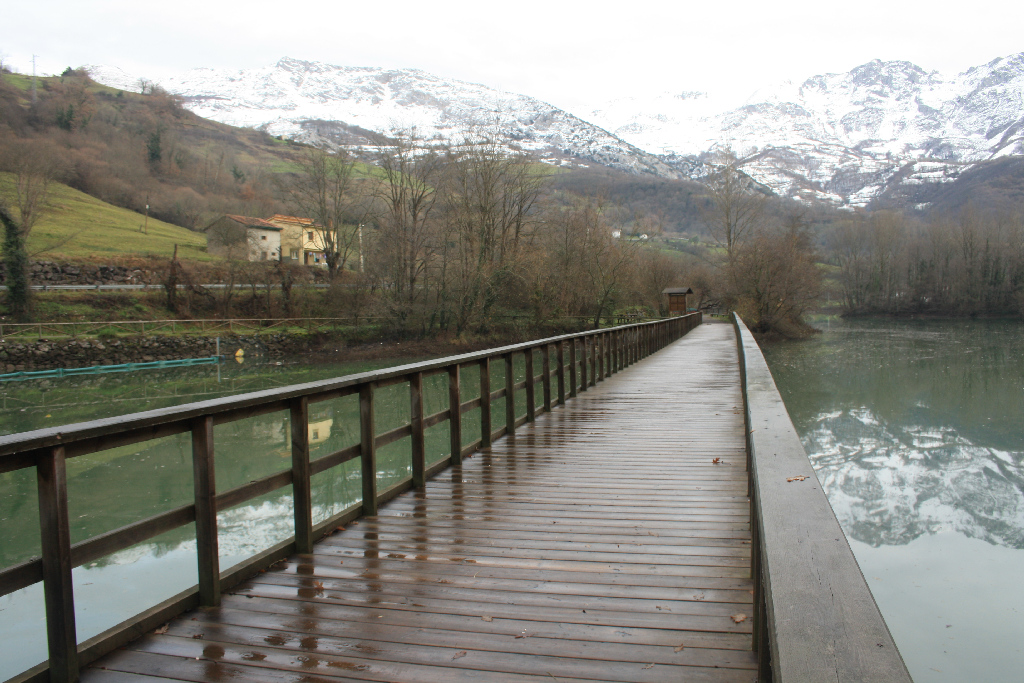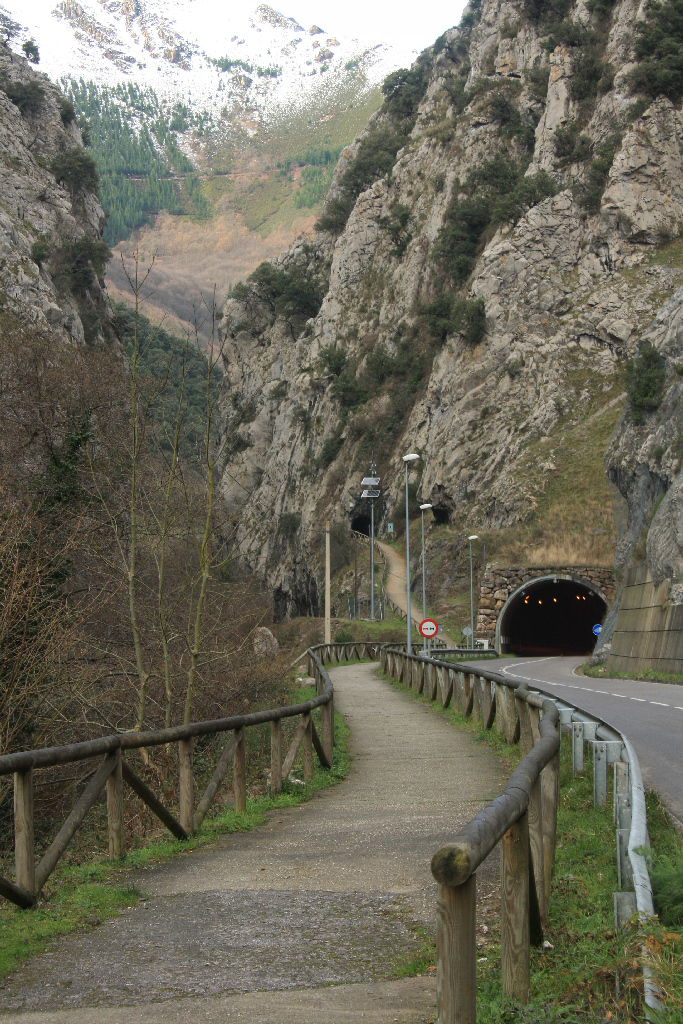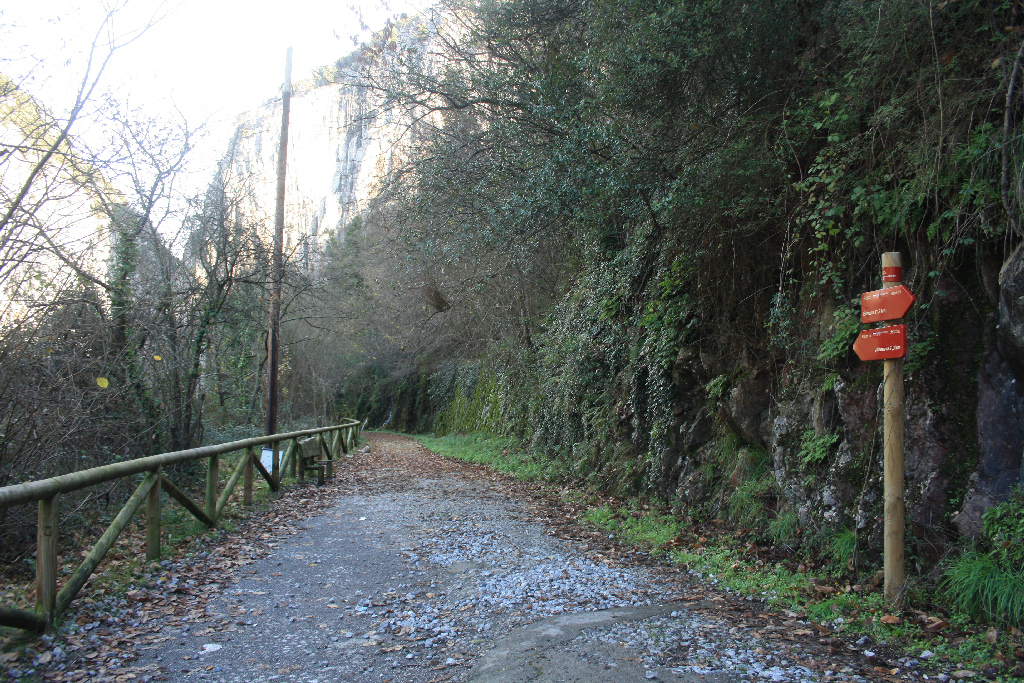- Home
- Rural Development
- Nature Trails
- Nature Trails
- Northwest Sector
- Cordillera Cantábrica. Asturias interior
Stage 15: Bárzana - Villanueva
Description

On the Bear Trail
From Bárzana, in Quirós County, the Nature Trail converges with the Bear Trail, along the River Trubia. This spectacular route heads to Proaza, home to Paca and Tola, two bears that live in a fenced habitat. From there it continues to Villanueva, in Santo Adriano County, where this section ends.
After leaving the village of Bárzana, the route continues along the AS-229, next to the start-end panel. Leaving San Salvador to the right, and immediately after the Quirós Ethnographic Museum, the route turns onto a paved trail that runs parallel to the left side of the road. The Bear Nature Trail overlaps with this section until the village of Villanueva, where it ends.
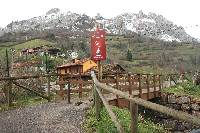
Before reaching the Bear Trail, the traveller can visit the Quirós County Ethnographic Museum, located in the village of La Fábrica, which provides insight into the customs and traditions of the highland villages of Trubia Valley. The museum recreates a traditional "quirosana" village house, with its various rooms and home furnishings. It also has on display different local traditional crafts, such wooden shoemakers, coopers and weavers.
Once the route has joined the Bear Trail, a paved path, the route continues along the Trubia River, leaving behind the villages of Arrojo (Arroxu) and Veiga, where it crosses a wooden bridge over the river. The path crosses the river by wooden bridges at various points along the route.
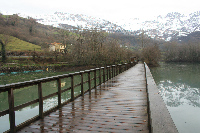
It now continues along the bottom of the valley, bounded by limestone and quartzite slopes. It traverses through highly diverse vegetation, including riparian forests of ash (Fraxinus angustifolia), alder (Alnus glutinosa) and hazel (Corylus avellana)trees; copses of common oak (Quercus robur), and chestnut (Castanea sativa), and a few meadows. Most of the route is protected by a wood fence.
In due time, it arrives at Valdemurio Reservoir in the town of Las Regueras, where the path crosses a long wooden bridge, skirts the reservoir and climbs through a tunnel. At various points, the route also passes through stone tunnels carved out of the rock.
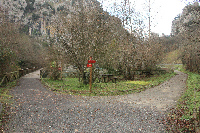
After leaving behind Valdemurio Reservoir, the route runs parallel to the AS-229, past the towns of Caranga de Arriba or Santullano and Caranga de Abajo. It then continues along Peñas Xuntas gorge, where it once again runs along the riverbank, through a landscape populated by holm oaks (Quercus ilex), until Proaza.
After leaving Proaza, and before reaching Buyera recreation area, there is a fenced bear habitat where the bears Paca and Tola live in semi-freedom. Looking back, Pico Forcada can be seen from the route. Buyera recreation area is equipped with a playground, a sports field and a pool. Located close to the fenced enclosure is the Casa del Oso, from where the bears can be easily seen. There is also a permanent exhibition on the Cantabrian brown bear.
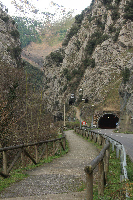
The final stretch of the route passes first behind El Sabil Lodge, descend slightly, and cross the AS-229. Caution should be exercised when crossing the road. The route reaches the village of Villanueva, and continues to the start-end panel located immediately after the town hall. Just ahead is Villanueva's, perfectly preserved, Roman bridge, and a small rest area next to a stone basin, with wooden tables and benches.
Sites of interest
Profile
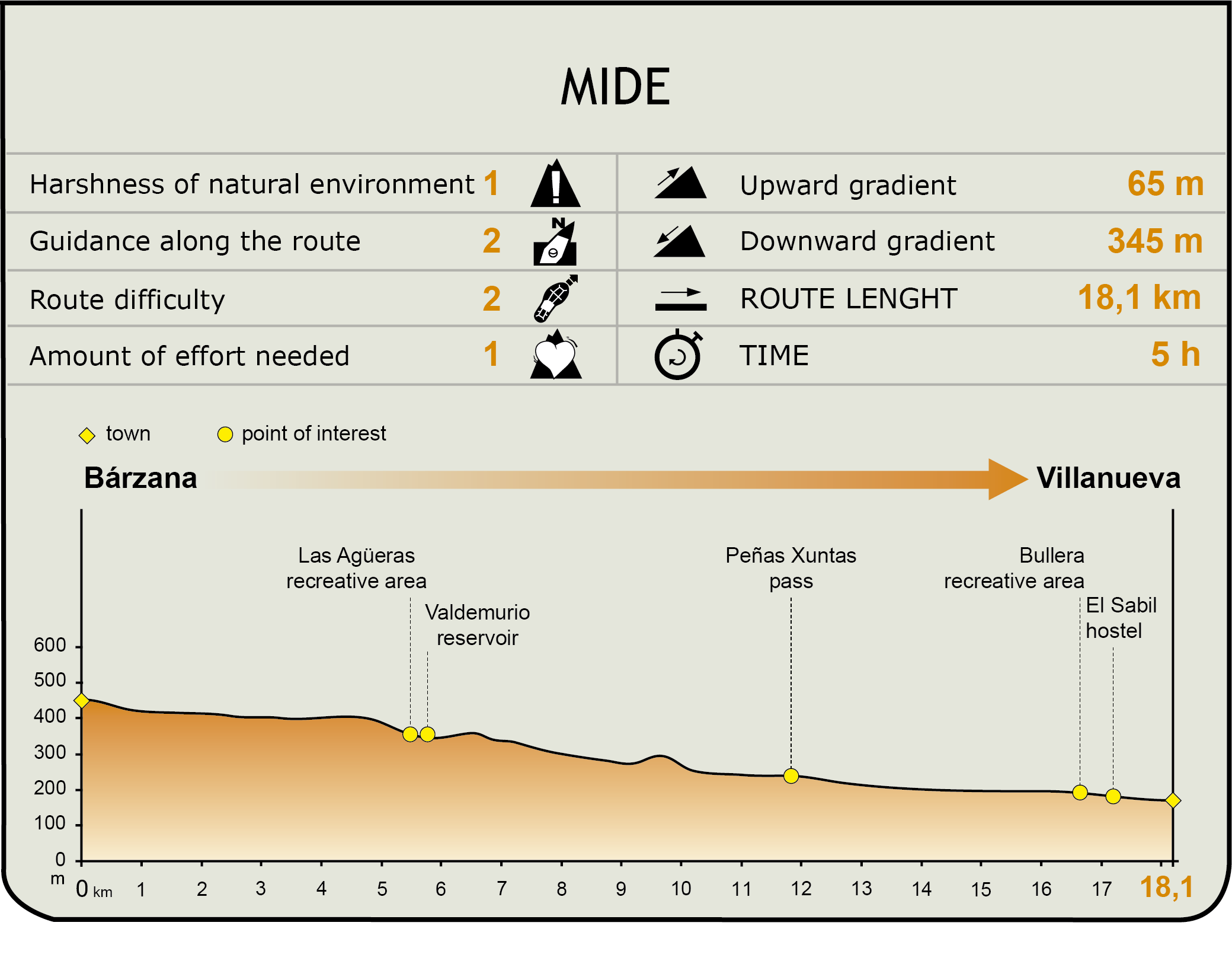
MIDE (Method for the Information of Excursions)
Featured
Further information
The Bear Trail
The Bear Trail is a Nature Trail that partially travels along the old railway line that once ran through Trubia Valley. This railroad linked the iron ore and coal mines of Quirós Valley and Teverga with the Entrago mining site. A 40-km railway line that, for nearly a century, from 1874-1964, carried small locomotives and wagons loaded with ore through an area of outstanding natural beauty inhabited by endangered Asturian wildlife species, such as brown bears (Ursus arctos), otters (Lutra lutra) and golden eagles (Aquila chrysaetos).
Church of San Pedro de Arrojo
The Romanesque church of San Pedro de Arrojo is a small temple, probably built in the first third of the 13th century. It is one of the most interesting architectural structures in Quirós County. The church, recently restored, has been altered throughout its history. It has an atypical distribution for an Asturian church. It has a single nave, divided into four sections by pilasters that correspond to the external buttresses. The single nave has a semicircular apse in the east end with remains of frescoes, probably from the fifteenth century. The Palace of Arrojo, owned by the Quirós family, is located very near the church of San Pedro.
The history of Paca and Tola
After successive relocations throughout Spain, Paca and Tola, two Cantabrian sister bears over 20 years of age, were released in Mount Fernanchín, in Santo Adriano County, where an enclosure was built to demarcate the lower edge of the Bear Trail. The bear habitat, which extends over a large swath of the mountain, donated by the town council, has a feeding area and is surrounded by a security fence.
Paca and Tola were orphaned after poachers killed their mother and hid the two cubs. They were recovered months later by the Nature Protection Service of the Guardia Civil (SEPRONA). Initially, the sisters remained on the premises of the Asturian Fund for the Protection of Wildlife (FAPAS) in Llanes (Asturias). They were later relocated to Vic (Barcelona) and, subsequently, to Hosquillo (Cuenca). They were transferred to their permanent home, the fenced bear habitat at Santo Adriano, on May 26, 1996.
A large number of visitors from across Spain come expressly to see the bears, especially in the summer. Except during hibernation (late November to early March), Paca and Tola come down every day, at noon, to the feeding area to be fed by their caretaker. This is when the tourists get to see the bears up close and watch them bathe in the pond. It is unlikely that the bears will be seen during the rest of the day, as they remain amongst the trees in the upper reaches of the enclosure. Since 2008, Paca and Tola have a guest, Furaco, a Cantabrian male bear brought in from Cabárceno (Cantabria) to attempt the breeding of the sisters.
